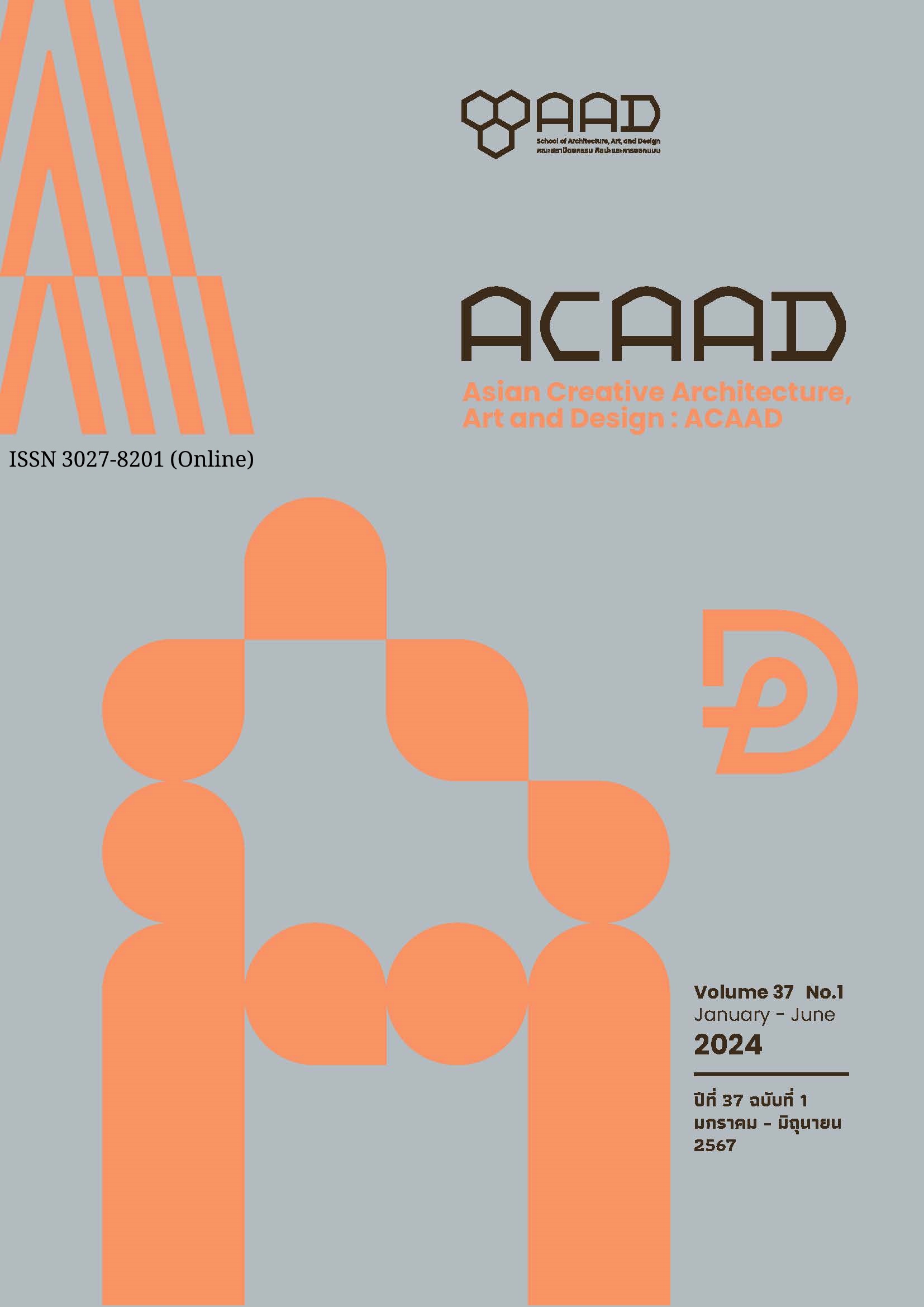The Approach of Waste paper Furniture from the Perspective of Mosaic Art
Main Article Content
Abstract
This paper aims to study the design method of paper home decoration from the perspective of mosaic art. The author divided the research into two parts, namely the design of the external surface of the paper furniture decoration and the internal structure of the product. Firstly, the design and development process of the project investigated the application of mosaic forms based on corrugated fiberboard and pulp. Through the classification, cutting, and splicing of corrugated paper, as well as the artificial coloring and molding of paper pulp, for the purpose of finding the visual symbols that convey mosaic art. Then, during the experiment, the structural proportions of the corrugated paper were adjusted through cutting and stacking, aiming to find ways to improve the load-bearing capacity of the corrugated paper, thereby achieving product functionality. Finally, further development was carried out by creating scale models to re-examine the proportions, structure, and stability of the design. The conclusion of the design development is consistent with the stated objectives. Paper material is functionally feasible as a home material, and combined with mosaic art, it can enhance the performance of home products at the aesthetic level and visual form.
Three important discoveries were made during the project. 1) The process of applying paper pulp and corrugated fiberboard in the design of home decoration furniture. 2) The approach of using paper pulp as raw material to present mosaic art. 3) The method to improve the hardness and load-bearing capacity of paper furniture.
Article Details

This work is licensed under a Creative Commons Attribution-NonCommercial-NoDerivatives 4.0 International License.
This work is licensed under a Creative Commons Attribution-NonCommercial-ShareAlike 4.0 International License.
Copyright Transfer Statement
The copyright of this article is transferred to Journal of The Faculty of Architecture King Mongkut's Institute of Technology Ladkrabang with effect if and when the article is accepted for publication. The copyright transfer covers the exclusive right to reproduce and distribute the article, including reprints, translations, photographic reproductions, electronic form (offline, online) or any other reproductions of similar nature.
The author warrants that this contribution is original and that he/she has full power to make this grant. The author signs for and accepts responsibility for releasing this material on behalf of any and all co-authors.
References
Barboutis, I., & Vassiliou, V. (2005, October). Strength properties of lightweight paper honeycomb panels for the furniture. In Proceedings of International Scientific Conference (Vol. 10, pp. 17-18).
Čabalová, I., Kačík, F., Geffert, A., & Kačíková, D. (2011). The effects of paper recycling and its environmental impact. Environmental management in practice, 17, 329-350. https://doi.org/10.5772/23110
Dangelico, R. M., Pontrandolfo, P., & Pujari, D. (2013). Developing sustainable new products in the textile and upholstered furniture industries: Role of external integrative capabilities. Journal of Product Innovation Management, 30(4), 642-658. https://doi.org/10.1111/jpim.12013
Gehry, F., (1972). Easy edgy [Furniture]. https://zhuanlan.zhihu.com/p/163831457
Gehry, F., (1972). Wiggle Side Chair [Furniture]. https://zhuanlan.zhihu.com/p/163831457
Huang, J. (2017). Sustainable development of green paper packaging. Environment and Pollution, 6(2), 1-7. https://doi.org/10.5539/ep.v6n2p1
Invader. (2016). Space Invaders [Art]. https://www.space-invaders.com/world/london/
Li, Q. (2018, July). Reflections on waste materials in the creation of craft culture. In 4th International Conference on Arts, Design and Contemporary Education (ICADCE 2018) (pp. 137-140). Atlantis Press.
Locktov, J. (2005). Mosaic Art and Style. Quarry Books.
Rubenis, A. (2019). Nature’s guestroom [Furniture]. https://tildemosaic.com/2020/06/02/mosaic-furniture-guestroom/
Semple, K. E., Sam-Brew, S., Deng, J., Cote, F., Yan, N., Chen, Z., & Smith, G. D. (2015). Properties of Commercial Kraft Paper Honeycomb Furniture Stock Panels Conditioned under 65 and 95 Percent Relative Humidity. Forest Products Journal, 65(3-4), 106–122.
Silber, D. (2015). Pixel art for game developers. CRC Press.
Thomas, T., & Tiwari, G. (2019). Crushing behavior of honeycomb structure: a review. International Journal of Crashworthiness, 24(5), 555–579. https://doi.org/10.1080/13588265.2018.1480471
Yoshioka, T. (2001). “Honey-pop” chair [Furniture]. https://www.imj.org.il/en/collections/202560-0


